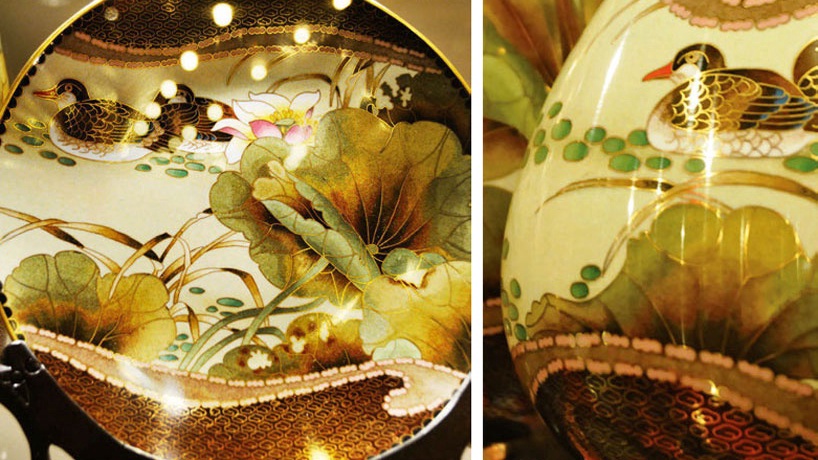
The Chinese philosophy of making wares is intriguing. As is reflected in making Chinese cloisonné, it has two outstanding characteristics:
First, the craftsmanship of the artisans is perfected to its utmost level. Chinese cloisonné is made completely by hand through a complicated and sophisticated process consisting of six main steps, including making the copper body, filigreeing, colouring, firing in a kiln etc. In fact, on more detailed examination, there can be up to 108 steps. As mentioned above, the complicated decorative patterns on the cloisonné jar made during the reign of Emperor Xuande of the Ming Dynasty was produced by filigreeing. A pair of tweezers was used to twist fine flattened copper wire into the patterns of the dragon’s body and claws, and the clouds in the sky, which were then stuck to the body of the jar before enamel glazes of different colours were filled into the resulting lattices. Fired in a kiln, they became the colourful patterns we now see. A piece of copper the size of a drop of water can be stretched into a thin wire of 2 meters long, 1 millimetre wide. The wire needs to be shaped into various patterns, usually through seven to eight twists and turns, sometimes even over dozens of twists and turns. Filigreeing demands great patience and perfect craftsmanship. The copper-wire patterns have to be identical with the original design. Otherwise, when they are filled with enamel and fired, they will look stiff and lifeless.
Secondly, the culture of making various wares in China attaches great importance to the harmonious relationship between man and nature. When the copper-wire patterns are ready, they have to be stuck to the copper body of the ware. This is done not with some high-tech glue but with bletilla striata—a species of orchid which is also a kind of traditional Chinese medicinal herb. For its very high viscosity, bletilla striatais an excellent adhesive agent; more importantly, in the process of firing, chemical glues will leave some residue which may affect the quality of the cloisonné, while bletilla striata, as a natural plant, will leave no trace after firing.



